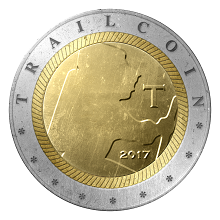Action Potential - 1/19/2017
What about humans
In neuroscience, culturing neurons and other brain cells is old hat. You’ve probably seen plenty of videos and pictures of neurons firing, growing, eating, transporting stuff, and turning all sorts of pretty colors. As it happens, we’ve never done this to human neurons before. The biggest problem? Growing cells is really tough, and usually requires something like cutting off the head of a rat and quickly dissecting its brain to get tissue to put in a fluid and temperature that will maybe keep it alive…maybe. At least at the university where I reside, the Institutional Review Board generally frowns upon experimental designs involving the decapitation of humans, even if you use the usual euphemisms like ‘sacrifice’ or ‘sac’ing’.
These trivial problems did not deter a band of researchers at the University of Pennsylvania who were able to successfully culture adult human neurons donated from patients undergoing brain surgery. This is even more remarkable, because neurons don’t divide in adulthood, so the cultured neurons were likely quite old. The obvious advantage of this is that rodents are not humans, so although we can learn some things about say… differences between young and old neurons… by studying rodent cells, we can learn even more by studying human cells directly.
DOI: 10.1016/j.celrep.2016.12.066
Ongoing search for cooties in brain continues in failure…
The long quest to find the anatomical correlates of sex differences in the brain just keeps missing. In its most recent instantiation, Dr. Lise Eliot and her team conducted a meta-analysis of volumetric studies on a structure in the brain known to be involved in a lot of emotional processing, the amygdala. They found no evidence for significant differences in the amygdala’s volume (for either hemisphere of the brain) after correcting for overall brain volume.
Okay. Before you go sharing this with all your friends as another “win” for gender equality movements everywhere, I want to reflect on these types of studies because they are political, and we should always take a step back to remind ourselves of some principles of science. Frankly, I got all riled up by the article in ScienceDaily, which ended with, “This study strengthens the case for gender similarity in the human brain and psychological abilities and has implications for efforts to understand the transgender brain.”
Let’s start by rephrasing this sentence so it is correct: This study weakens the case for volumetric sex differences in the sub-structures of the limbic system in humans, but it should be noted that this has no bearing on psychological abilities and implies literally nothing at all about transgender brains.
First, in science you “reject a hypothesis”, and failure to reject it does not imply a truth. For example, perhaps no differences were seen because imaging studies can have more noise (since you’re doing a Fourier transform on a single electrical signal utilizing the nuclear magnetic resonance of the spins of protons in water from a whole slice of brain, and then warping, smoothing, and correcting the images created by that signal…instead of say…cutting out the amygdala and measuring it with a ruler).
“But if there were real differences in size, then they must be really small!” you say. Okay, that brings me to my next point. Tell me, dear reader, how much bigger must one amygdala be from another for you to say, “ah yes, these two sexes of brain are different.” If you can’t decide for sure whether 1% matters or it has to be at least 100% bigger, that’s probably because there isn’t a particularly good reason to equate the size directly to any behavioral phenomenon. In fact, most inferences that you would make about sex differences if the study turned out the other way would be fallacious and depend on “reverse inferences.” Just because the amygdala is involved in aggression, and mine is bigger than yours, doesn’t necessarily mean that I’m more aggressive.
Let’s not forget that we already know that men and women are different.
For instance, men have penises and women do not. That’s a whole different organ! Some of those differences are known to affect behavior, such as differences in hormones and how those hormones interact in male and female bodies. I think brain differences are so problematic because they are equated with intelligence and personality. Since there are real unfair gender disparities in society, no one wants to risk feeding that fire. But we have to be careful about how we use science for these issues… science cares about what is true, not about what is best for society, and to try to use science without rigor to support what is politically correct ultimately takes away from the scientific method. I’m not actually criticizing the scientist here or the study, which was done well. I’m just raising warnings about how far the press takes these types of findings.
Rant over.

Hello @ben.zimmerman,
Congratulations! Your post has been chosen by the communities of SteemTrail as one of our top picks today.
Also, as a selection for being a top pick today, you have been awarded a TRAIL token for your participation on our innovative platform...STEEM.
Please visit SteemTrail to get instructions on how to claim your TRAIL token today.
If you wish to learn more about receiving additional TRAIL tokens and SteemTrail, stop by and chat with us.
Happy TRAIL!
